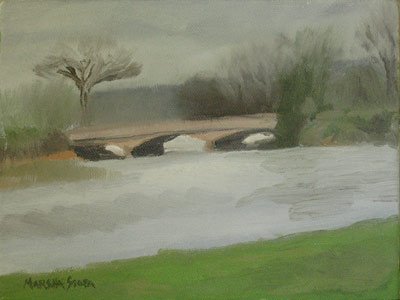
I spent about two-and-a-half days in Pisgah National Forest, a magical place of more than 510,000 acres that transverses several counties in the Blue Ridge Mountains of Western North Carolina. There's a tremendous amount of interesting natural and conservation history here.

 This one is from behind the falls. So cool, so peaceful.
This one is from behind the falls. So cool, so peaceful.
Learned some interesting things from one of the senior volunteers at the Cradle of Forestry. The Forest Service provides an RV park with full hook-ups, well-equipped kitchen and dining room and shower house for its senior volunteers. The volunteers, all in uniform, are expected to work about half the time they're on assignment, leaving them lots of time to hike, explore or enjoy. The several I talked to clearly enjoyed the work -- mostly service jobs -- and loved where they were doing it. The gentleman I talked with had lived a number of places, including Ann Arbor, Mich.
More than 85,000 acres was originally owned by George Vanderbilt, who built the incredible Biltmore Estate in Asheville. After Vanderbilt's death, his widow sold the land to the U.S. government in 1914 for $5 an acre.
At left is Looking Glass Falls, accessible from the road and said to be "the most photograhed falls in America."
The man responsible for building and maintaining the Biltmore grounds and gardens, the well-known landscape architect Frederick Law Olmsted, recommended Vanderbilt hire a forest manager. Gifford Pichot , who was later the first chief of the USDA Forest Service, created what was the first forest management plan in the country, for Biltmore Forest. He was followed by German forester Dr. Carl Schenck. Schenck had a degree in forestry -- unknown in the United States at the time -- and started the Biltmore Forest School in 1895, the first forest conservation school in this country. It was the start of modern forest conservation in America. I spent an interesting afternoon at the Cradle of Forestry in America, a 6,500-acre historic site nestled in Pisgah Forest.
All that to say that for someone like me who adores trees and forests, I was in my element. Pisgah has more than 1,734 miles of forest system trails, plus about 330 miles of national trails, including 226 miles of the Appalachian Scenic trail. I only did a scant couple files hiking into a delightful waterfall, Moore's Cove. Three of my many photos are below.

 This one is from behind the falls. So cool, so peaceful.
This one is from behind the falls. So cool, so peaceful.Learned some interesting things from one of the senior volunteers at the Cradle of Forestry. The Forest Service provides an RV park with full hook-ups, well-equipped kitchen and dining room and shower house for its senior volunteers. The volunteers, all in uniform, are expected to work about half the time they're on assignment, leaving them lots of time to hike, explore or enjoy. The several I talked to clearly enjoyed the work -- mostly service jobs -- and loved where they were doing it. The gentleman I talked with had lived a number of places, including Ann Arbor, Mich.







1 comment:
I love the photo with the little wooden path!
Post a Comment